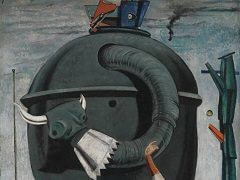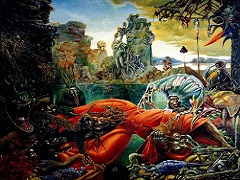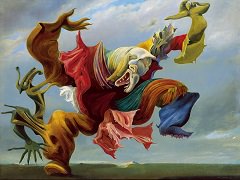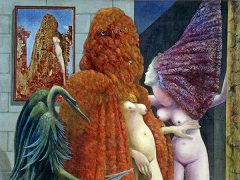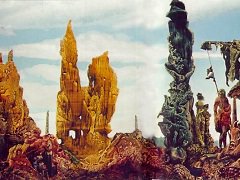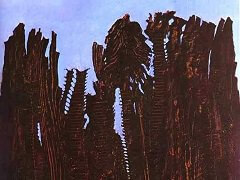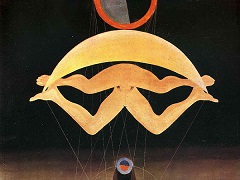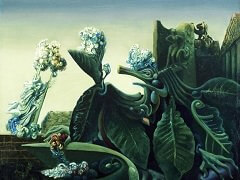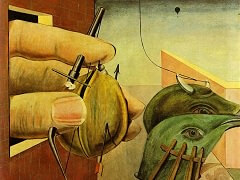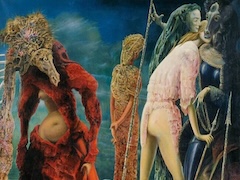Little Machine Constructed by Minimax Dadamax in Person by Max Ernst
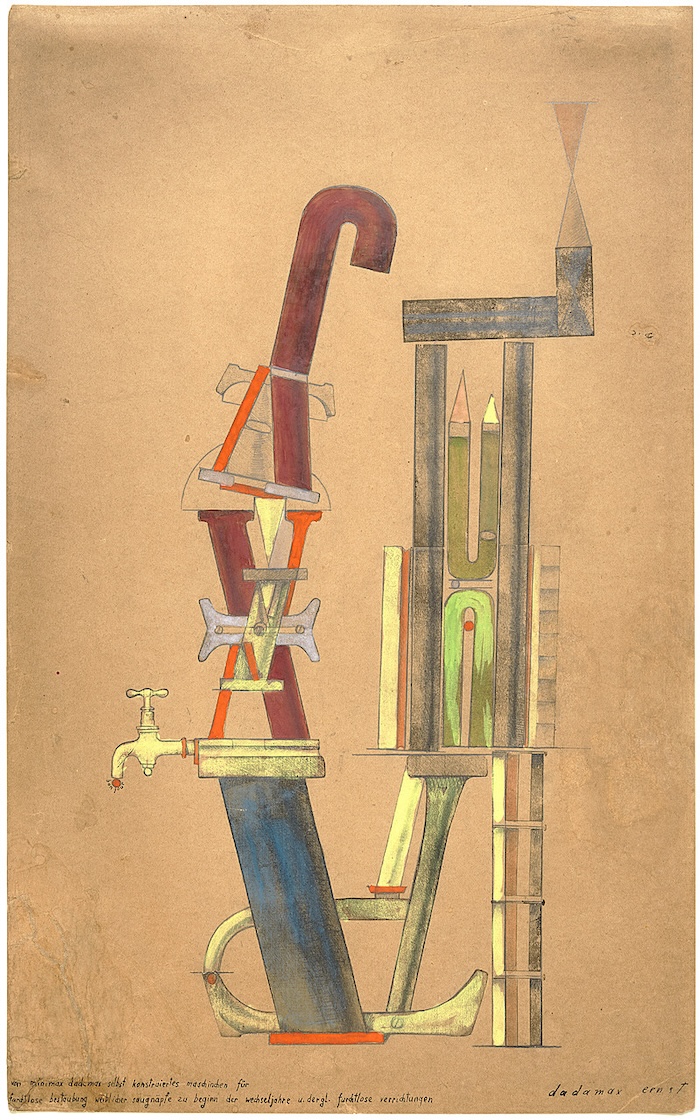
Little Machine Constructed by Minimax Dadamax in Person was executed in Cologne the year Dada was established there. It belongs to a series of about fifty works dating from 1919-20, based on diagrams of scientific instruments, in which Max Ernst used printer's plates to reproduce preexisting images. The impressions, once altered by traditional coloristic and modeling effects, occupy a position between found object and artistic product, like his collages.
In both subject and style the series can be compared with Francis Picabia's mechanomorphic drawings and paintings. Ernst shared with Picabia an interest in typography, printed images, and l anguage; many of the forms in the present work can be read as letters. They function as well to describe a mechanical structure that can be seen as a symbol of sexual activity, like Picabia's Very Rare Picture on the Earth and his The Child Carburetor, 1919, or Marcel Duchamp's The Bride Stripped Bare by Her Bachelors, Even, 1915-23. Ernst's machine is a fantasized solution to the psychological pressures of sexual performance, as announced in the humorously heroic inscription at the bottom of the sheet: Little machine constructed by minimax dadamax in person for fearless pollination of female suckers at the beginning of the change of life and for other such fearless functions. The right side of the machine seems to comprise a miniature laboratory for the production of semen, which is indicated as a red drop that courses through passageways to the left side of the apparatus. The drop finally issues from the yellow faucet, accompanied by a whimsically self-assured and cheerful "Bonjour." Alternatively, the machine can be seen as a combination of male and female halves. The female (at the right) is dowdy and angular; the more brilliantly colored male (at the left) "fearlessly" points away from her.

